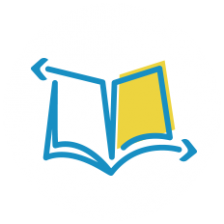How do you know when a child has a language delay versus a disorder? Unfortunately, there is not always a straightforward answer to this question. As we know, each child is unique and affected by intrinsic (i.e., biological, such as family history, birth weight, severe prenatal and/or perinatal complications) and extrinsic (i.e., environmental, including access to health care, stable residence) factors. Each child meets developmental milestones at different rates and after varying degrees of practice. However, there are widely accepted developmental norms for the acquisition of speech and language skills. When these are not attained, or attained at a slower rate than chronological age peers, questions about delay or disorder rise to the forefront.
A language delay is just that — a delay in acquisition of language skills compared to one’s chronological and cognitive/intellectual age peers. A young child with a language delay may exhibit a slower onset of usage of a language skill, rate of progression through the acquisition process, sequence in which the language skills are learned, or all of the above. Generally, early language delay (late talking) may be characterized by less than 50 words at 24 months, few word combinations at 30 months, limited use of gestures and sounds to communicate, limited symbolic play, limited understanding of word meaning and inability to follow verbal instructions. Approximately 50 to 70 percent of these youngsters (i.e., late talkers) reportedly catch up to peers and demonstrate normal language development by preschool and school age. However, there is a subset of children who continue to demonstrate persistent difficulties acquiring and using language skills below chronological age expectations (by preschool or school age) that cannot be explained by other factors (e.g., low nonverbal intelligence, sensory impairments or autism spectrum disorder) and may be identified as having a specific language impairment (i.e., language disorder).
The American Speech-Language Hearing Association (ASHA) defines a language disorder as a significant impairment in the acquisition and use of language across modalities (e.g., speech, sign language, or both) due to deficits in comprehension and/or production across any of the five language domains (i.e., phonology, morphology, syntax, semantics, pragmatics). Language disorders are heterogeneous, and the nature and severity of disorders can vary considerably.
In contrast to a delay or a disorder is a language difference. Vinson (2012) defines a communication difference as when communication behaviors meet the norms of the primary speech community but do not meet the norms of Standard English. This difference can exist whether the person in question is a child from a different country or simply a different neighborhood in the same city. She goes on to note that, regardless of the degree of variation, all dialects are considered to be linguistically valid and legitimate.
So, what are some options for addressing language delays and disorders? Intervention for a language delay may take on several forms:
- Indirect treatment and monitoring
- Provide activities for parents and caregivers to engage in with the child, such as book sharing and parent-child interaction groups
- Check in with the family periodically to monitor language development
- Direct intervention, including techniques such as
- Expansions — repeating the child’s utterance and adding grammatical and semantic detail
- Recasts — changing the mode or voice of the child’s original utterance (e.g., declarative to interrogative)
- Build-ups and breakdowns — the child’s utterance is expanded (built up) and then broken down into grammatical components (break down) and then built up again into its expanded form
Intervention for a language disorder is child specific and based on that child’s current level of language functioning, profile of strengths and weaknesses and functioning in related areas, including hearing, cognitive level and speech production skills. The overall goal of intervention is to stimulate language development and teach skills to enhance communication and access academic content. The developmental appropriateness and potential effectiveness on communication and academic and social success should be considered when developing treatment goals.
Whether you suspect a language delay or language disorder, it is critical to seek the expertise of a speech-language pathologist to ensure proper observation and intervention as needed. Certified speech-language pathologists are employed in schools, private practice and medical centers/hospitals. Early intervention services for children are available through local school systems or health departments nationwide via the Individuals with Disabilities Education Act. For more information about speech-language pathology services, visit www.asha.org.
Sources:
American Speech-Language Hearing Association. (n.d.). Spoken Language Disorders. (Practice Portal). Retrieved 1/8/2015 from www.Practice-Portal/Clinical-Topics/Spoken-Language-Disorders.
Vinson, B.P. (2012). Preschool and School-Age Language Disorders. Clifton Park, NY: Delmar Cengage Learning.







Thank you Aruna for sharing your expertise with us! Very informative article.